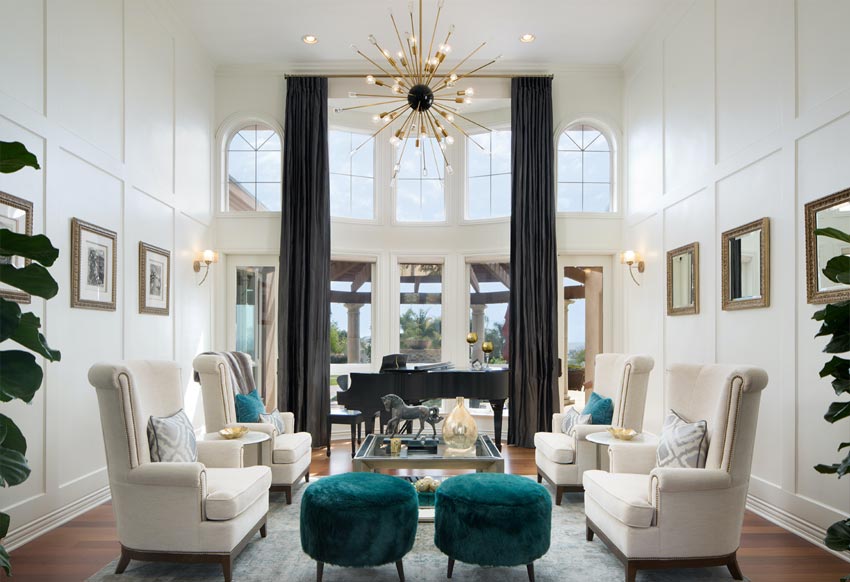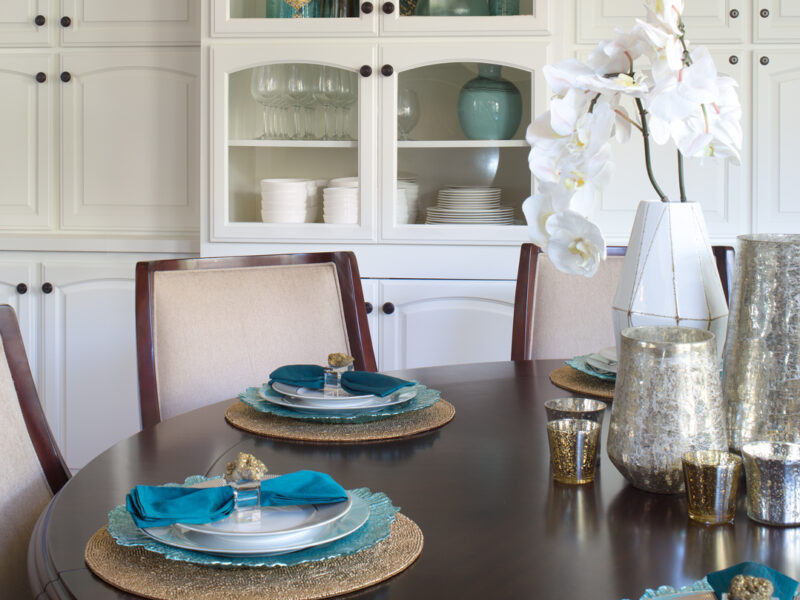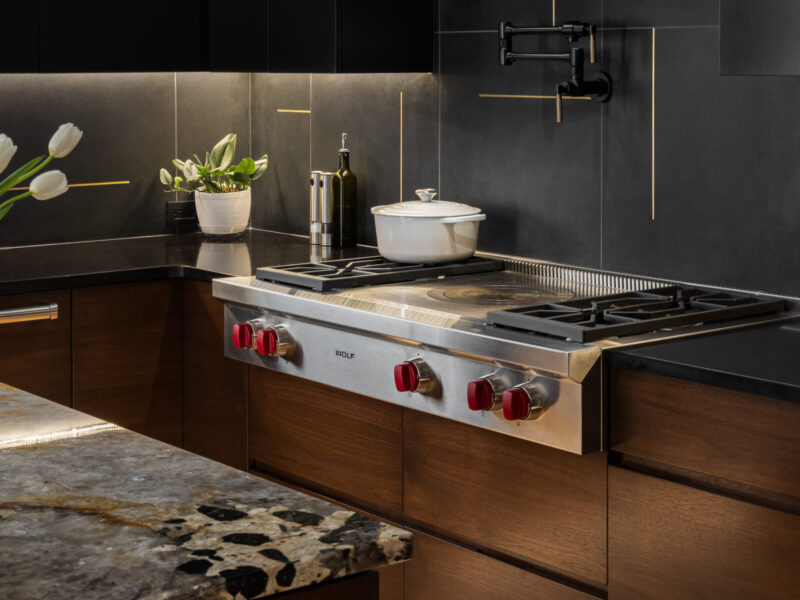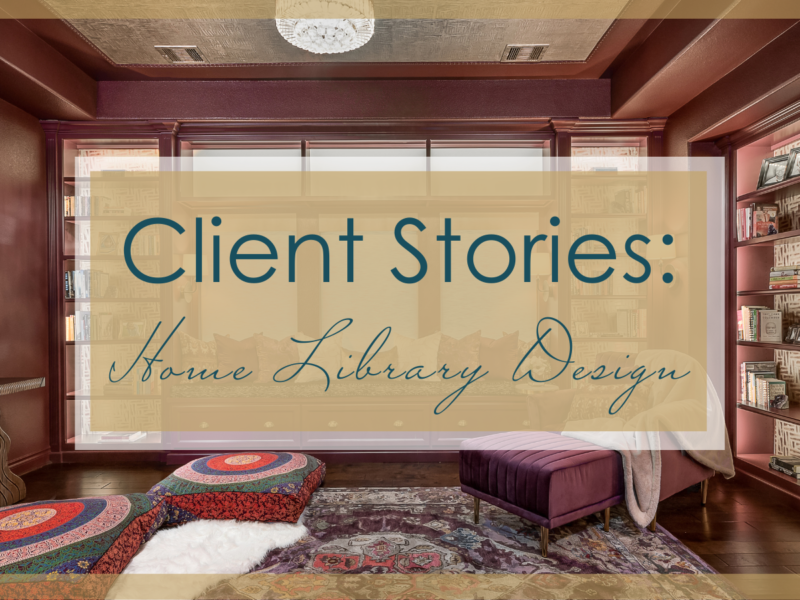
Design 101 – Principles of Design
Written by Nikki N. Klugh
Stahl Living Room designed by Nikki N. Klugh
I am often asked by design enthusiasts to explain some of the jargon that designers use as they describe the vision they have for a room. So, I decided to write this column as an informal education to interior design. However, I’ve added a little twist. Since I design spaces holistically, I go beyond the traditional considerations when I design. Therefore, I’ll have a few additions now and then to what normal interior design textbooks will teach — more on that in future editions.
If you want to accomplish great interior design, you must have a good foundation about what makes design work. That foundation consists of the elements and principles of design, upon which every aspect of a well-designed space is measured against. The elements are simple; there are space, line, forms, light, color, texture and pattern. How you properly use those elements are informed by the design principles.
What are design principles? They concepts used to organize or arrange the structural elements of design. Design principles are unchanging rules about interior design that when followed create a pleasing space. The principles of art and design are balance, proportion and scale, rhythm, emphasis, contrast, and unity or harmony.
Balance is the even distribution of the visual weights of the elements of design in a space. Balance causes the design to have stability. Some refer to this as being “grounded”. There is symmetrical balance, asymmetrical balance, and radial balance. Symmetrical balance is when two separate but identical groups of items, objects, or elements on either side of an object have equal and identical visual weight. Asymmetrical balance is when two separate and un-identical groups of items, objects, or elements on either side of an object have equal but not identical visual weight. Radial balance is when the weight of items is visually balanced around a central point. Balance is the most important design principle in holistic design because without balance a space can not feel grounded and generally feel amiss. All other principles can be used to achieve a well balanced space.
The design for this room started with the homeowners’ original Chagall art pieces. Considering the shape of the room, the view, and the art, I decided to make this a modernization of a traditional and classical space. It was achieved through a perfectly balanced room with one side that was a literal mirror image of the other. Look closely to the frame on the right…those are mirrors custom sized and framed as closely as I could to the Chagall art directly opposite of it. Balance is definitely achieved this way, but can be achieved many ways as seen in some other spaces created by the NKDG team.

The tall bookcase to the right was balanced by the tall, dark abstract painting hung above the sofa on the left.
The grand space of the Stahl Living Room had incredible potential, but needed many design elements to transform it from a very bland space to the showpiece that the homeowners wanted. I can actually show all of the other design principles in this space alone, so let’s get to it.

Stahl Living Room Before Proportion is the feeling of unity created when all visual attributes such as size, weight, quantity, color, texture, etc. relate well to each other.

Proper proportions were used this space by selecting tall back chairs to mimic the 16’ ceilings. Although light in color, the weight of the chairs is conveyed through the wood base and nail head trim.
Scale is the size of a pattern or object relative to other patterns, objects, or design elements and their surroundings. Unusual, exaggerated, or unexpected scale can help to gain the viewer’s attention.
Wainscoting was used to divide the walls into a more palatable scale. The woodwork visually cuts the space down without actually making the room any smaller. Here is a drawing provided to the contractor to specify exactly what the design team wanted to created.

Emphasis is the part of the design that stands out and attracts the attention of the viewer. A focal point is an example of emphasis. The parts of the design that are emphasized gives contrast to the rest of the design. Emphasis can be small or large, but the emphasized area is different in terms of design, style, color, shape, form, texture, or another aspect of design. In this space the floor to ceiling charcoal draperies provided a huge punch and an undeniable emphasis on the dramatic.
Of all of the design elements in this space, the scale of the ottomans are the least expected item to show the distinction between a well designed space and an expertly designed space. The custom teal ottomans are 20% larger than ones that you would normally find. This was done to balance the dramatic draperies and is a perfect example of how the elements and principles of design are intermingled in both simple and complex ways.
Rhythm in design is very similar to rhythm in music. You want to create patterns of repetition while at the same time highlight the contrast of a space so there is something interesting. A very simple rhythm was created with the teal pillows, ottoman and echoes in the area rug. A more complex one with the elements of gold that appear throughout in lighting, accessories, curtain hardware and art frames all in varying intensities that keep your eyes moving around this grande room.
Unity (Harmony) happens when all of the elements and principles of design used in a space form a cohesive whole and give a feeling of completeness. It is when all of the parts work together for a visually pleasing result. Now, it’s your turn…
What are your favorite elements and/or principles that you see at work here that help to make this space harmonious? I’d love to hear your thoughts!

Certified Interior Designer, Nikki N. Klugh, ASID, IIDA
Nikki is an award winning interior designer and mentor based in San Diego, CA. Fueled by 17 years of interior design experience and—even more importantly—a passion for creating spaces that support and improve your overall well-being, Nikki will design a home that makes you feel like a better you, so you can experience Everyday Luxurious LivingTM.




Mark
Thanks for your blog, nice to read. Do not stop.